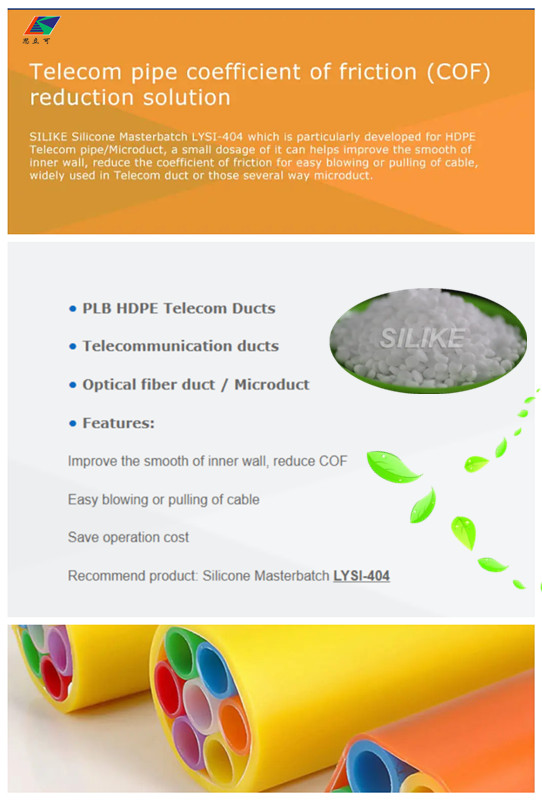The use of high-density polyethylene (HDPE) telecom ducts is becoming increasingly popular in the telecommunications industry due to its superior strength and durability. However, HDPE telecom ducts are prone to developing a phenomenon known as “coefficient of friction” (COF) reduction. This can lead to a decrease in the performance of the ducts, resulting in decreased signal quality and reliability. Fortunately, there are several methods that can be used to reduce COF in HDPE telecom ducts.
1. One of the most effective methods for reducing COF in HDPE telecom ducts is by using a lubricant. A lubricant can be applied directly to the inside of the duct or sprayed onto the outside surface. This will reduce friction between the walls of the duct and any cables that are running through it, resulting in improved signal quality and reliability. Additionally, lubricants can also help protect against corrosion and wear on the inside of the ducts, further increasing their lifespan.
SILIKE’s silicone masterbatch LYSI-404 is an efficient lubricant. Provide Solutions for Reducing COF in HDPE Telecom Ducts or Optical Fiber Ducts and Pipes.
Why Silicone Masterbatch is widely used to enhance the production efficiency and installation of optical fiber ducts and pipes?
SILIKE silicone masterbatch added in the inner layer of HDPE pipe reduces the coefficient of friction thus facilitating the blow of optic fiber cables to a longer distance. Its inner wall silicon core layer is extruded into the inside of the pipe wall by synchronization, distributed uniformly in the whole inner wall, the silicone core layer has the same physical and mechanical performance as the HDPE: no peel, no separation, but with permanent lubrication.
2. Another method for reducing COF in HDPE telecom ducts is by using a special coating or liner on the inside walls of the ducts. These coatings or liners are designed to reduce friction between cables and walls, resulting in improved signal quality and reliability. Additionally, these coatings or liners can also help protect against corrosion and wear on the inside of the ducts, further increasing their lifespan.
3. Finally, another method for reducing COF in HDPE telecom ducts is by using an air-filled cushioning material between cables and walls. This cushioning material helps reduce friction between cables and walls while also providing additional protection against corrosion and wear on the inside of the ducts. This method is particularly useful when dealing with long runs of cable as it helps ensure that signals remain strong throughout their entire journey through a given conduit system.
Contact us, Get Solutions for optical Fiber ducts and HDPE Telecom Ducts!
Post time: Aug-11-2023





